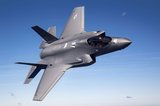Germany to miss NATO spending target despite short-term rise
German defence spending will rise next year but then drop off again as a percentage of GDP, Berlin said on 18 March 2019, in news expected to anger US President Donald Trump.
Trump has repeatedly attacked Germany and other NATO allies for falling far short of meeting the target of spending 2% of gross domestic product on their militaries, accusing them of freeloading on US military might.
Germany's finance ministry presented its budget planning for coming years on 18 March. It said that defence spending would reach 1.37% of GDP in 2020. But it would then drop off to 1.29% by 2022, and to 1.25% by 2023.
Though NATO countries have only promised to try to hit 2% by 2024, the failure of many to even get close to that has infuriated Trump, who has reportedly threatened to pull out of the alliance if the European allies does not boost spending immediately.
Germany, Europe's economic powerhouse, has come in for particular criticism from the US, whose military spending dwarfs that of the rest of the alliance. In 2018 Washington spent nearly $700 billion on defence, compared with just $280 billion for all the European NATO allies combined. While German defence spending went up from $45 billion to $50 billion last year, the country's growing economy meant the figure relative to its GDP stayed flat at 1.23%.
Figures released this month showed that just seven of the 29 NATO countries hit the alliance's defence spending target in 2018: the US, Britain, Estonia, Greece, Latvia, Lithuania and Poland. NATO Secretary General Jens Stoltenberg last week welcomed Berlin's moves to increase its budget so far but stressed that ‘I expect further increases’.
Trump's regular outbursts about European defence expenditure have caused some to question the future of the alliance, which celebrates its 70th anniversary this year. After the end of the Cold War military budgets in Europe steadily dwindled, but Russia's annexation of Crimea and growing assertiveness have made defence a priority once more.
Last month a report by the International Institute for Strategic Studies (IISS) showed that NATO's 27 European countries fell short of the 2% target by $102 billion in 2018. The IISS said European NATO members would ‘collectively have had to increase their spending by 38%’ to hit the 2% target in 2018.
More from Defence Notes
-
![Canada set to look away from its neighbour and across the Atlantic for partners]()
Canada set to look away from its neighbour and across the Atlantic for partners
While non-EU UK struggles to join the Security Action for Europe initiative, which provides loans for defence programmes, Canada has become the first country outside Europe to get access – and did so for a nominal fee.
-
![NATO experiments with solutions to integrate networks, AI and uncrewed systems]()
NATO experiments with solutions to integrate networks, AI and uncrewed systems
During the latest edition of the NATO DiBaX, the alliance tested multiple capabilities to inform requirements for future efforts.
-
![Leonardo unveils plans for Michelangelo air defence dome]()
Leonardo unveils plans for Michelangelo air defence dome
The new multi-layered defence system will harness AI to neutralise airborne threats and protect Europe from Russian aggression.























